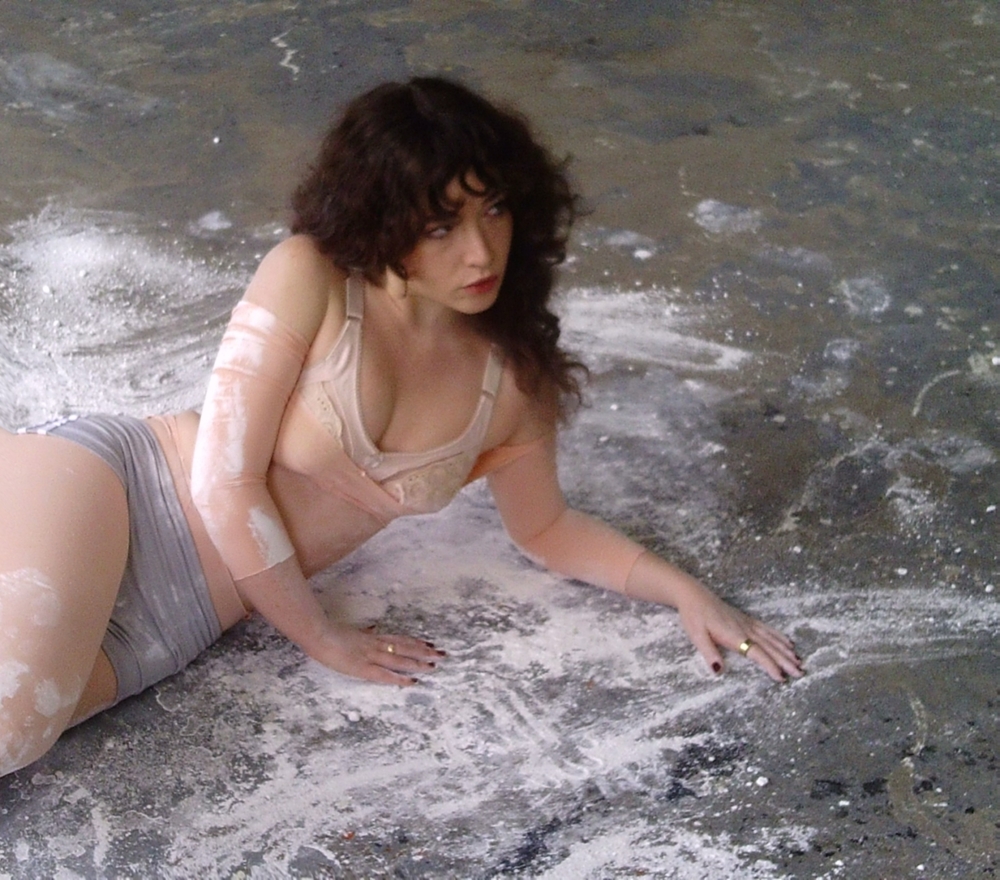New York native and director Sam Besca’s To the Floor, a short film written by Electra Artemis, unearths the menacingly cannibalistic femininity cultivated beneath the glitzy norms of European ballroom dance tradition. In an untitled photo collaboration with photographer and director Irmak Akgür, a sequence of shots taken while the short was in post-production, Besca creates an intertextual dialogue to dispel those gendered restrictions of ballroom, ecstatically.
Ultimately, both projects navigate the tensions of dance as a constant negotiation of discipline, beauty, and performance. The film, which is self-deprecatingly set within a poorly lit middle school bathroom on the morning of “the biggest competition of the year,” relays the absurd high-stakes world of a very ephemeral art practice through the dancers’ rituals of preparation, rather than the act of dancing itself. In Akgür’s photos, where Besca enters the frame with a lithe, fey grace, photographer and subject work together to isolate and abstract movement, freezing it in time as a rebellion against the rigid structures of dance as pure discipline rather than alternative expression.

Across these two distinct projects, Besca and her collaborators interrogate a politics of movement which imposes itself through words spoken and gestures made. Against a tradition founded upon the regulation of the human body towards the creation of ritual fantasy and a dedication to beauty, they question who gets to move freely, who is restricted by hierarchy, and how performance, particularly the performance of femininity, can be both liberating and alienating.
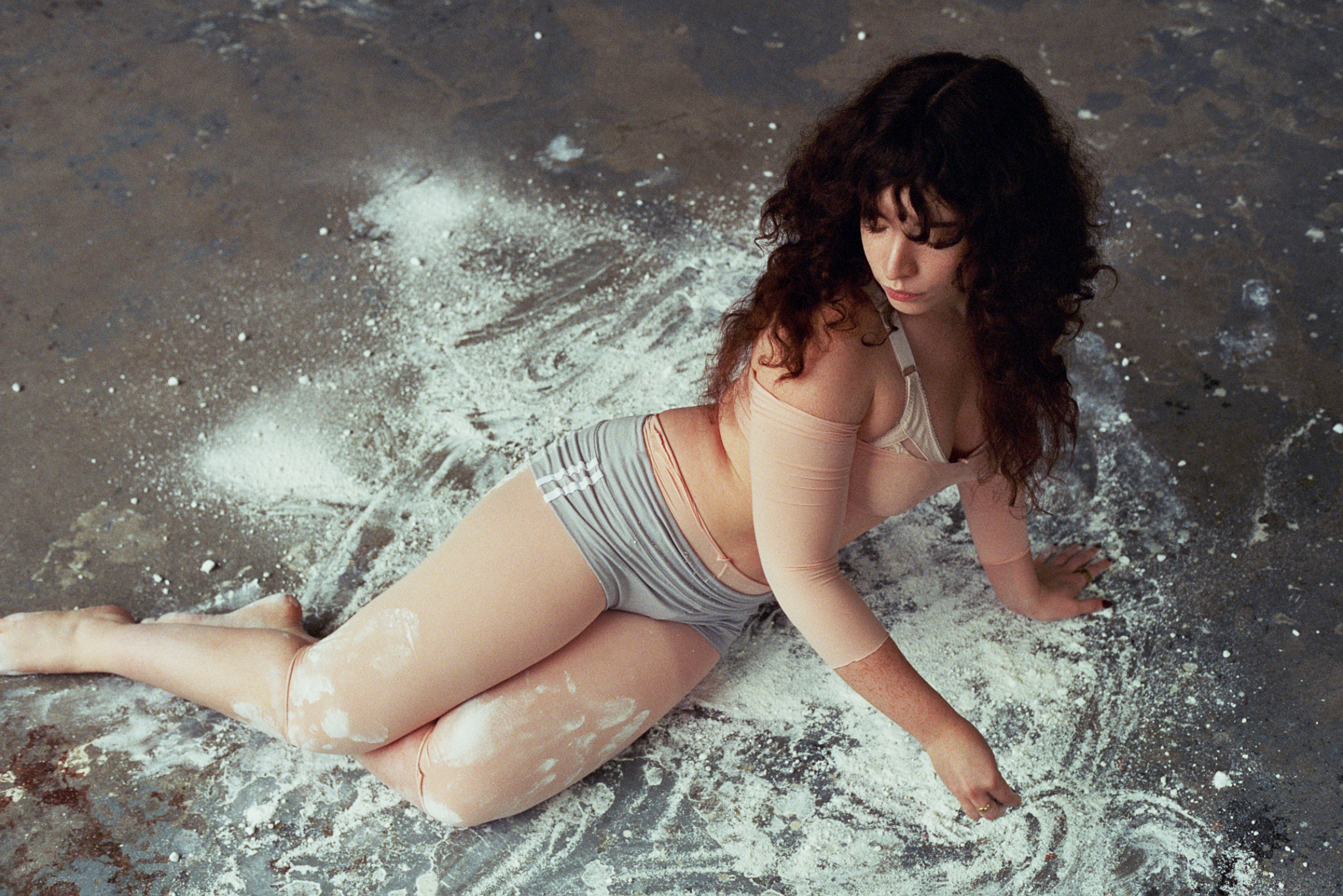
To the Floor, which launches this Friday in New York at Shinsen on Bowery, sits uncomfortably within a world quietly suffocating with desperation. In that middle-school bathroom at seven in the morning, college girls labour to perfect their facial and bodily beauty before they are called to present themselves to a panel of judges. With each drag of an eyeliner or installment of a fake eyelash, they ritually summon the capacity to be good at their craft. Pressed-down flyaways and the quality of one’s dresses signal status as much as skill. With the approval of the people around them, judges and their friends, against whom they also compete, a girl becomes undeniable. That the struggle towards this ideal, delicious state brutalizes the dancer—in her body and her body’s relationship to others in space, chaining her to a standard set to destroy her—is simply besides the point, which is to perform beautifully.
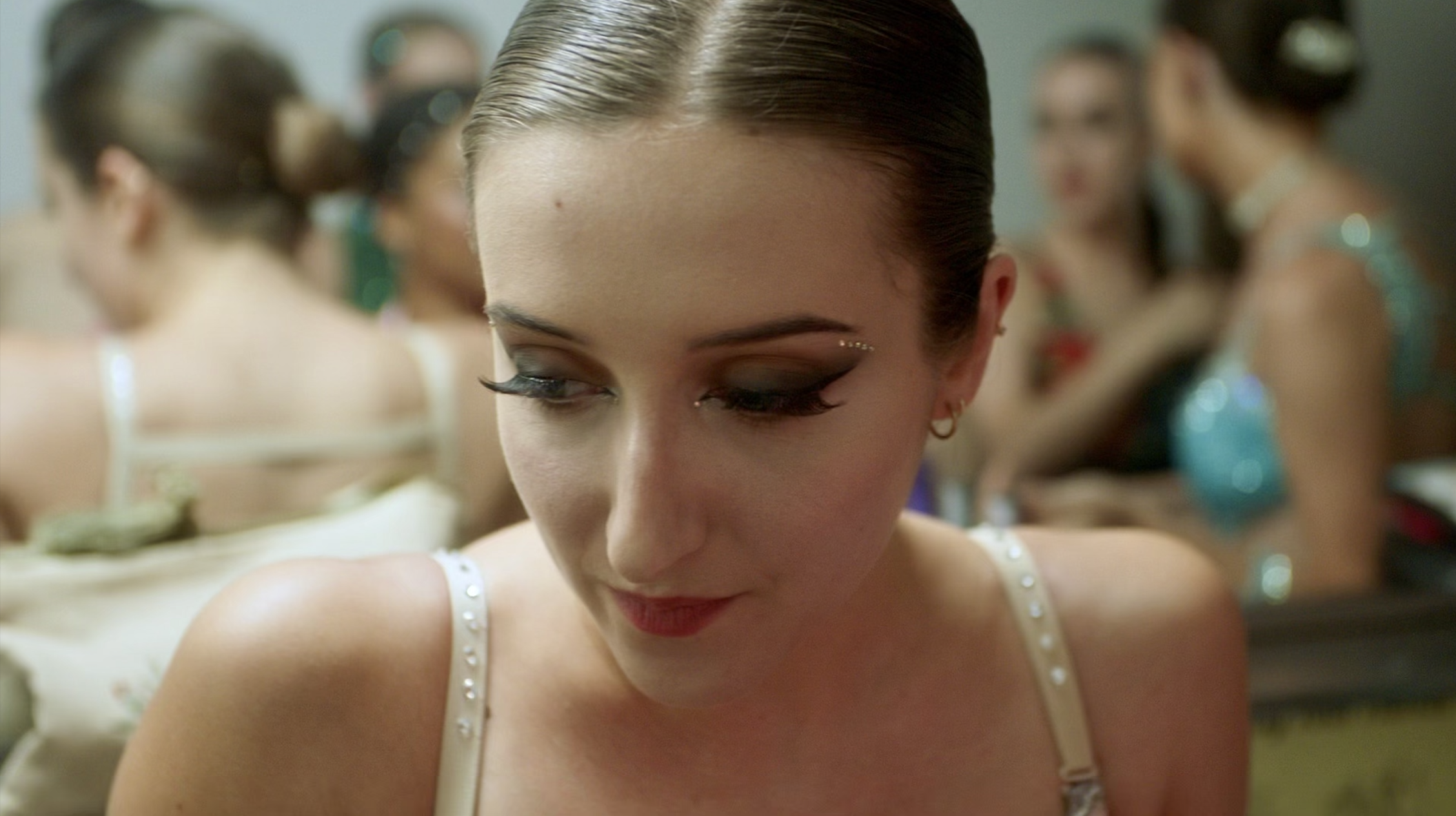
Speaking with Liminul, Besca revealed her educational background, not in dance, but as a trained actor who found herself directing and presenting to the camera through the mode of dance. “What draws me to really great performative art,” she said, “is that it’s at once for the audience and for the artist.” On this meta-critical level, To the Floor and Besca’s collaboration with Akgür, as performative products on the subject of performance by a performer herself, Besca poses a question about who her dancers are performing for, and the possibility that anyone who performs in public space risks performing at their own expense, for an audience that would readily sacrifice a performer’s well-being for the maximization of their pleasure.
Where To the Floor visually insinuates beauty as a precursor to success, Artemis’ script further suggests a male gaze and the performance of dance as the inversion, rather than subversion, of the performance of femininity that hetero-patriarchy insists upon women. Under Akgür’s lens, however, Besca actively resists this idea with a counter-narrative.
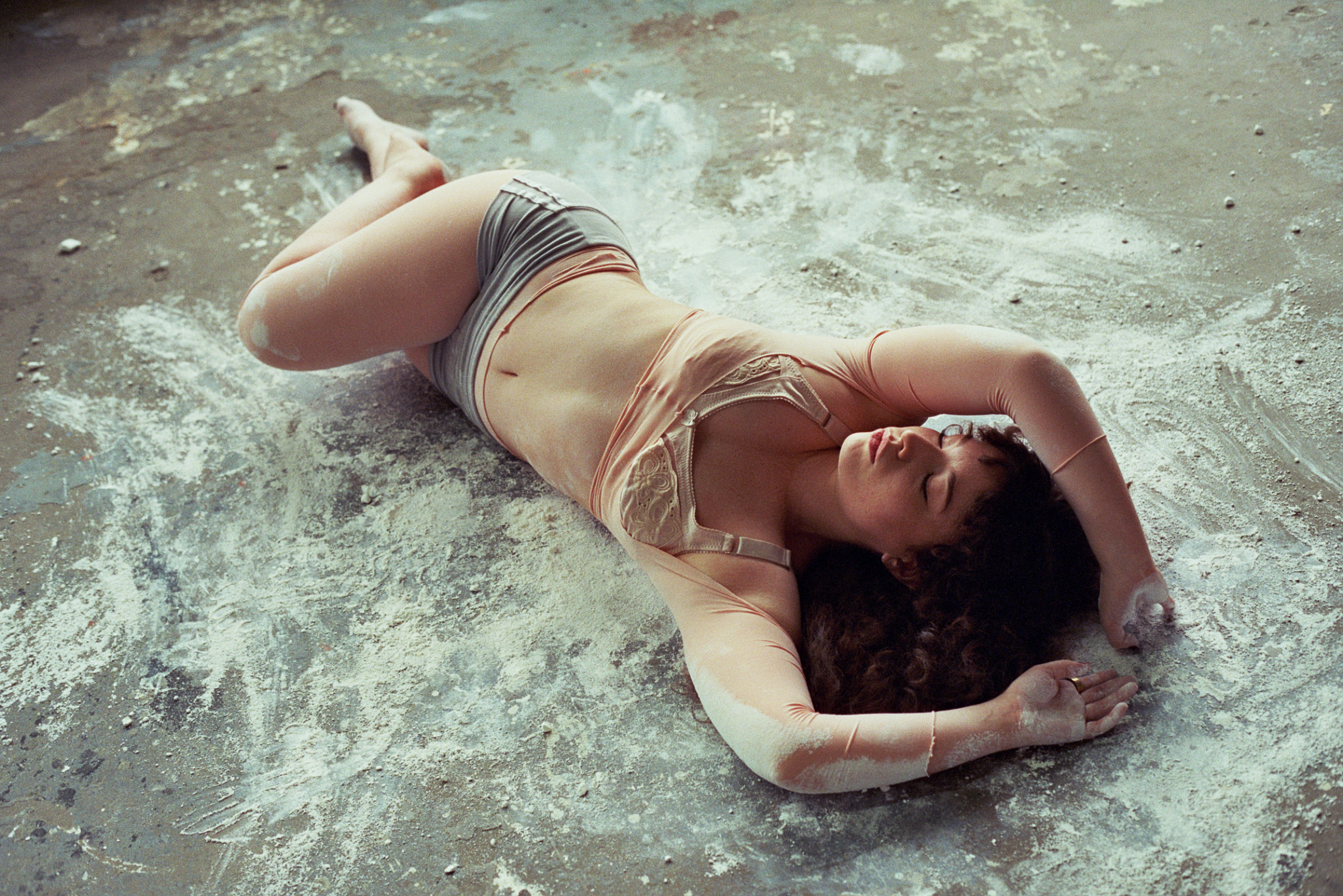
Of Akgür’s work, Besca said, “We studied images of dancers, the way their bodies exist in space in ways that are both fluid and graceful and shapes that are less predictably beautiful. Then [Akgür] came up with this idea to use chalk.” In the untitled sequence, Akgür captures Besca writhing on a cement-coloured floor covered in magnesium carbonate (chalk), a white powder traditionally used by athletes and dancers to strengthen grip and traction in the arms and feet. The gesture bears a rebellious, childlike jouissance; an innocent, pleasureful, and deeply intellectual energy for rebellion against whatever norms the body of the dancer, and the material of the chalk were made for. While Besca herself was unaware of the relationship between chalk and the conventions of dance, she acknowledged that, subconsciously, “ it felt more natural to us than adhering to tradition.”
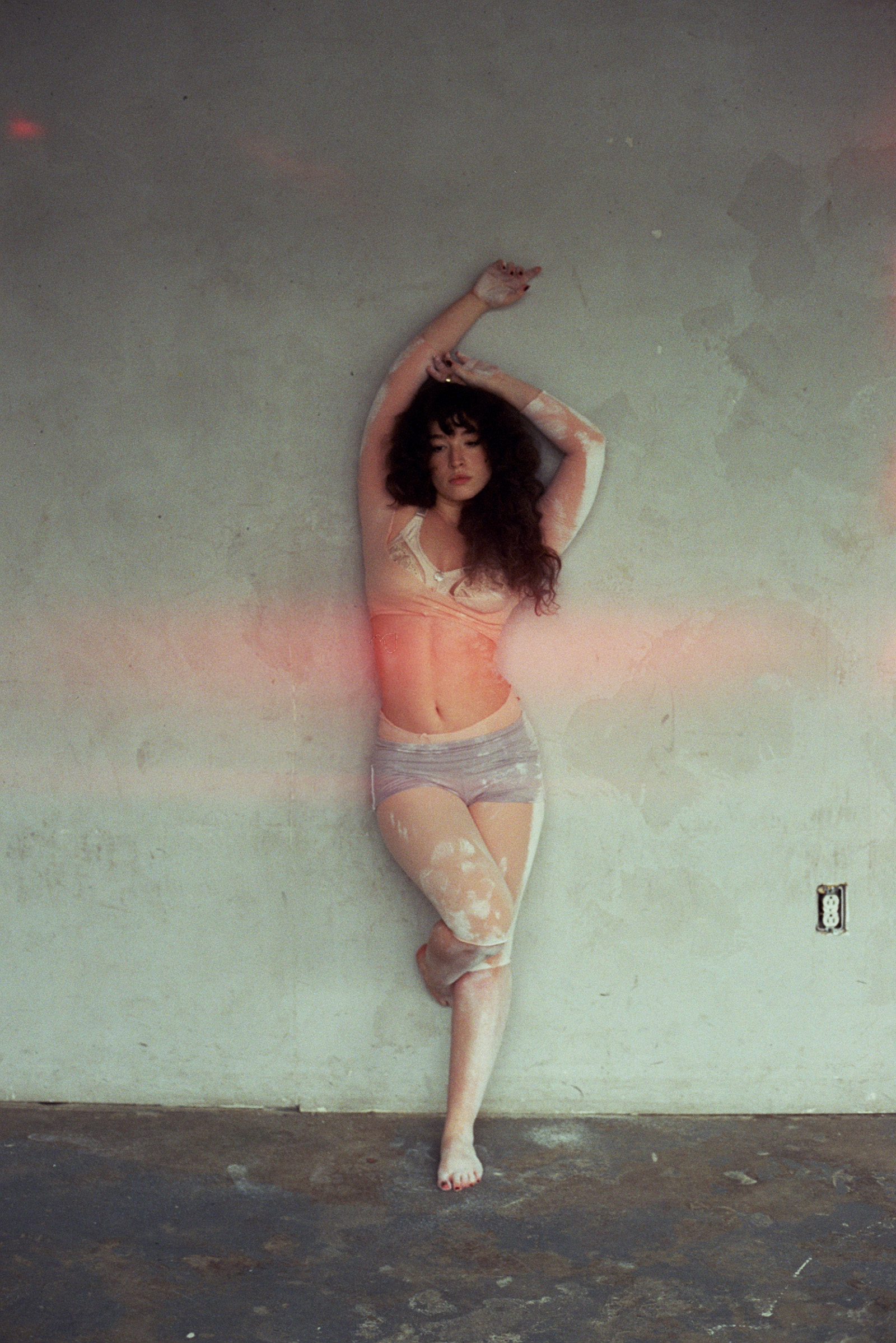
With each frame, twisting and turning in an outfit of short shorts and tight sheer clothing, between a woman subject and a woman photographer, Besca’s antithesis to To the Floor proposes the possibility of performing not only for ourselves, but alongside each other in a steady exchange; a sequence of compassion. To this effect, Besca and Akgür maintained “a really dynamic way of shooting something where the camera almost feels as much like a dancer as the women do.” If the subject wishes to crawl on the floor or roll in the dirt, the pair assert that it would be more interesting, even more fun, for the viewer to crouch down too, and roll in that dirt.
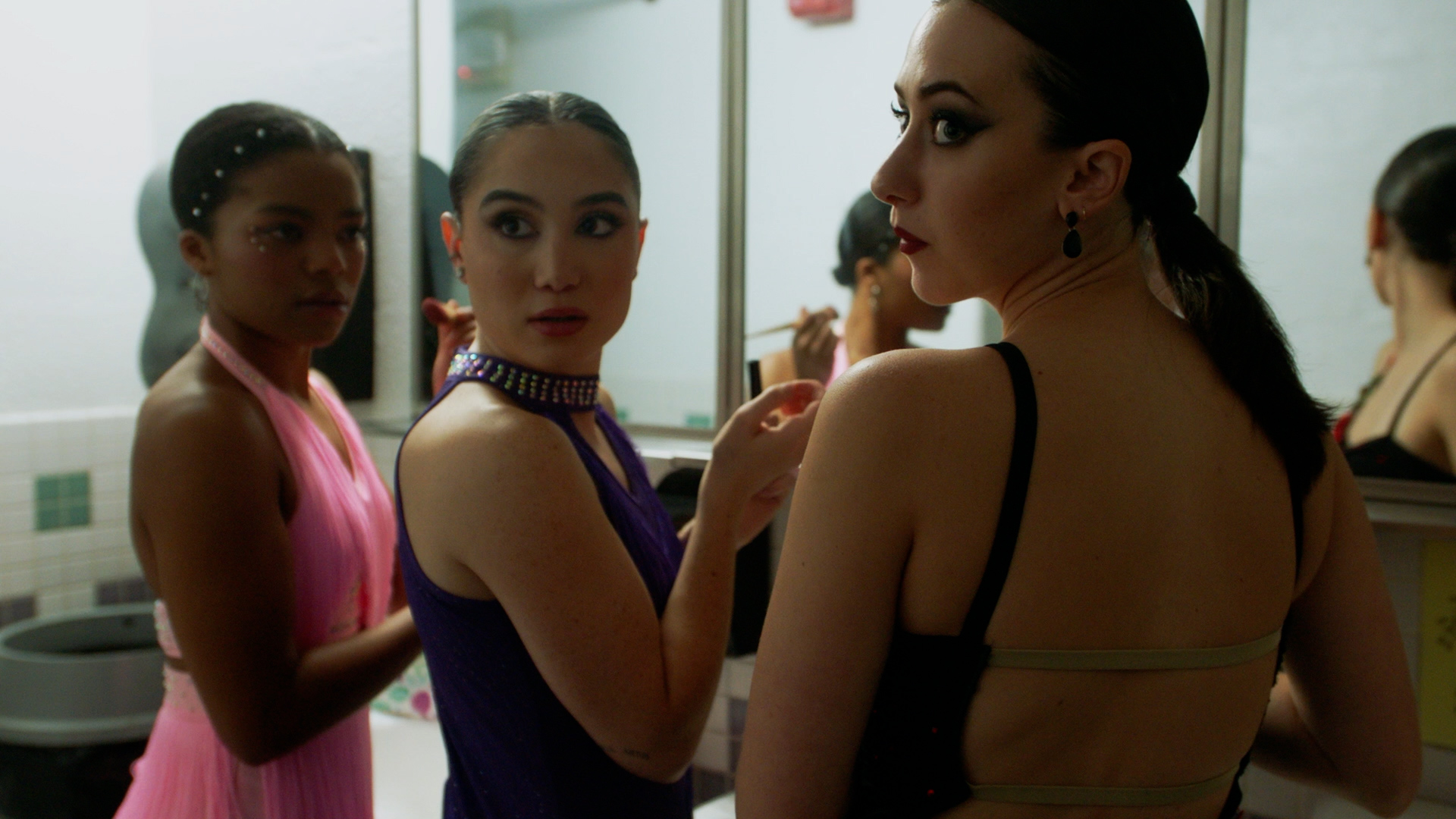
In To the Floor, however, in a competitive arena which awards medals of success along gendered norms of performativity, imperfection becomes scandalous, and girls who make mistakes make perversions of the craft. As the film subtly denotes and then explosively reveals in its screeching restrained climax, being physically beautiful and thoroughly skilled is encouraged until it attracts too much male attention, for which the men are not held accountable and the girl is ridiculed as dishonourable to the sanctity and custom of the ballroom. If a costume rips or a girl looks a little less than skinny, it is called ‘iconic,’ yet marked as an indignity. In an environment where validation is as tenuous as rejection, the tangible effect of social hierarchy leaves its imprint not just on the girls’ psyches but on their very bodies: “For dance forms like ballet or ballroom, you look at pictures of dancers’ feet and they’re cut up and bruised,” Besca said, “but on top of that is this beauty and elegance.”
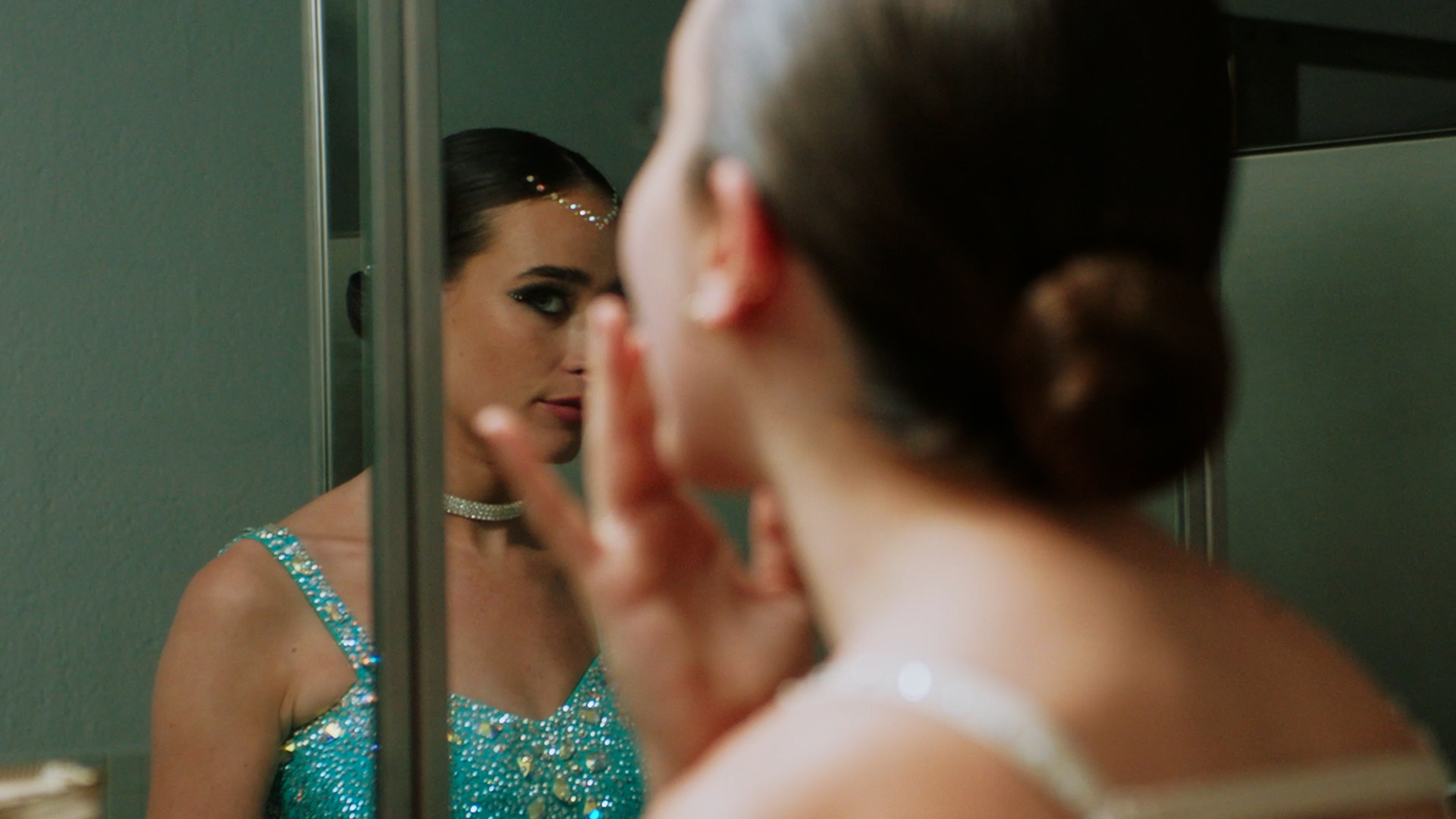
This underlying theme of dance as both creation and destruction is carried into Besca’s collaboration with Akgür, where the photography medium’s stillness paradoxically seeks to capture movement’s ephemeral nature in its sequential order. “We don’t ever see the dance on screen,” Besca says of To the Floor, “so the way that we have to signify movement has to come in a less literal format.” Rather than presenting dancers on the floor, the film represents language as the more direct arena than the dancefloor itself, where power is won, negotiated, and taken away with brutal clarity. Similarly, in Besca and Akgür’s work, dance becomes an echo of its ordered nature, a shape suggested rather than performed.
For someone unfamiliar with the art of dance, Besca excels in representing its tensions precisely through their universal quality. The body, the director marks, is sculpted by several forces. Paradoxically, our disciplines perfect our fragilities too. Subject to exhaustion and breakage, “[Performance] is such a gorgeous art form for rigour,” Besca observes. “Because in the act of creation, in the act of bringing something to life, you are also brutalizing parts of yourself to make that happen.” That means something, but who’s to say what?
 Jonathan Divine Angubua is currently finishing his undergraduate studies at the University of Toronto. He enjoys any interesting art and is always looking for great book recommendations. As a writer and lover of fashion, he is most inspired by strangeness and beauty.
Jonathan Divine Angubua is currently finishing his undergraduate studies at the University of Toronto. He enjoys any interesting art and is always looking for great book recommendations. As a writer and lover of fashion, he is most inspired by strangeness and beauty.

